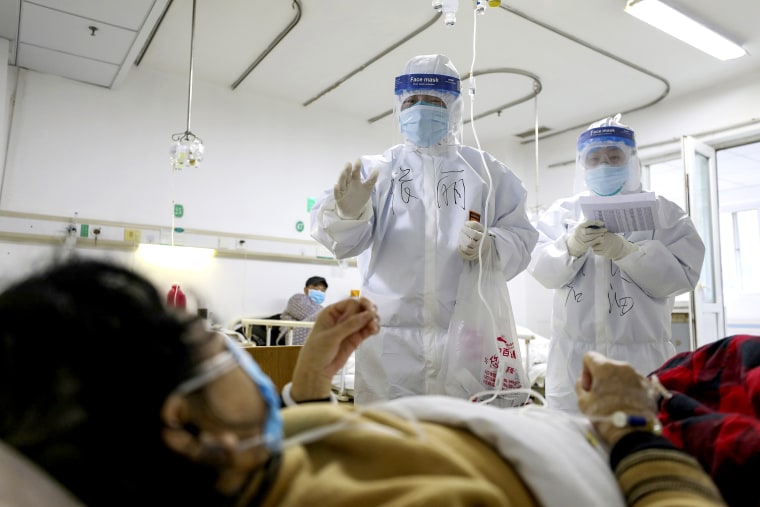A sudden rise in the number of coronavirus cases reported in China does not mean that the outbreak is accelerating dramatically.
On Thursday, Chinese health officials reported the striking increase in cases: 14,840 in one day, bringing the total number of cases in the country to almost 60,000.
While public health officials worldwide are concerned about the deadly outbreak and its potential for global spread, they offered measured guidance about what the apparent spike in cases really means.
In fact, it appears nothing unusually sinister occurred in the past 24 hours that would make the new coronavirus, which causes COVID-19, any more dangerous than it was the day before.
The increase "largely comes down to a change in how cases are being diagnosed and reported," Dr. Mike Ryan, executive director of the WHO's Health Emergencies Program, said. "This does not suggest a significant change in the trajectory of the outbreak outside China."
Doctors in the epicenter of the outbreak in China's Hubei province are now identifying cases based on what the patients' lungs look like on CT scans, rather than waiting for lab results to confirm infection with the virus.
This allows doctors to move more quickly to get patients the care they need, as well as start monitoring patients' family members or other close contacts who may have been exposed to the virus.
However, there is no proven way for clinicians to distinguish whether lung damage seen on a CT scan is caused by coronavirus or other types of infection, such as influenza.
"You can only say, 'We think it's COVID-19 because it's compatible with the virus that's circulating, and there's an epidemic here," Dr. Gregory Poland, an infectious diseases expert and director of the Mayo Clinic's Vaccine Research Group in Rochester, Minnesota, told NBC News. He said the cases are likely to be confirmed later by lab tests.
Full coverage of the COVID-19 outbreak
Indeed, only trained medical personnel in Hubei province have broadened their diagnostic criteria, because that's where the vast majority of cases and nearly all of the 1,367 deaths from the virus have been reported. Outside of Hubei province, cases are only confirmed using the lab test.
What's more, Ryan said, many of the nearly 15,000 new cases that were reported reflected a backlog of patients who had actually been diagnosed with the virus in previous days and weeks.
There have been nearly 450 cases confirmed in countries other than China, including 15 in the U.S. All of the U.S. cases can be traced to travel to China.
Follow NBC HEALTH on Twitter & Facebook.

